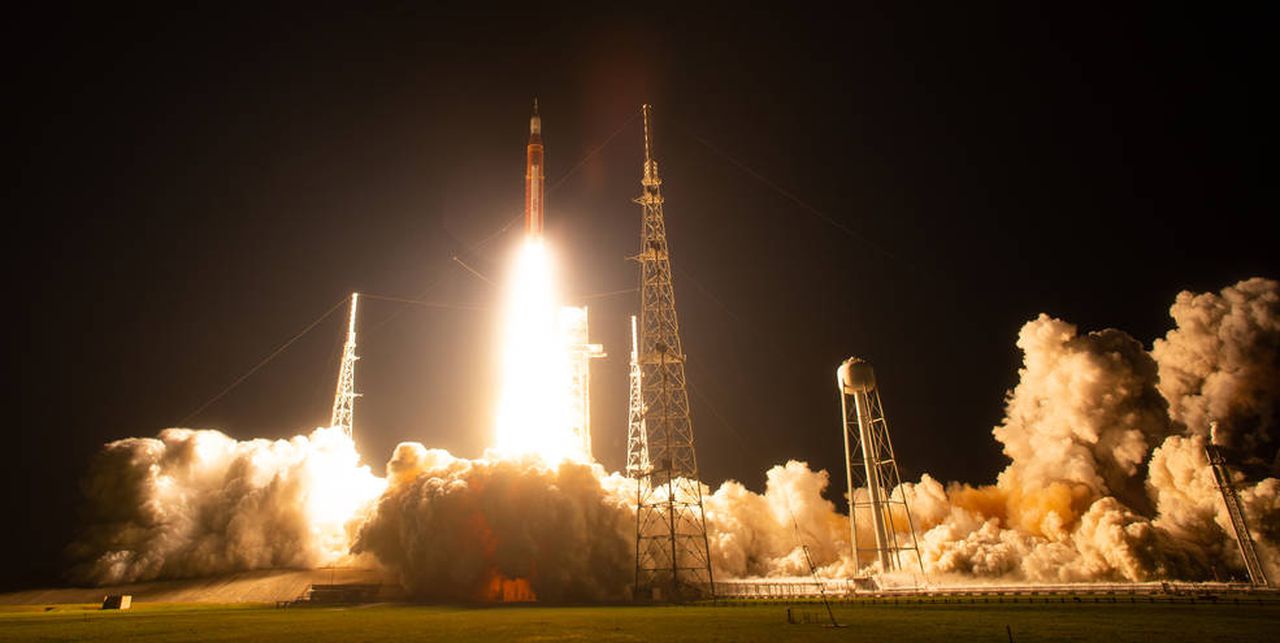âUnaffordableâ as is, NASA leaders say of moon program key to Huntsville
Senior NASA officials have told government auditors the space agency’s Artemis moon program “is unaffordable” at current costs, according to a federal audit released Thursday. The Government Accountability Office (GAO) report also said the space agency is not monitoring “ongoing production costs and other costs needed to sustain the program going forward.”
Artemis is boosted on rockets developed and managed at NASA’s Marshall Space Flight Center in Huntsville. They are built largely by Boeing outside New Orleans at the Michoud Assembly Facility also managed by Marshall. Boeing is “the prime contractor for the design, development, test and production of the SLS core stage, upper stage and flight avionics suite,” the company says on its website.
The space agency “does not plan to measure production costs,” the GAO report said, but “cost transparency” is needed given the billions in tax dollars being spent for future Artemis missions.
NASA does have a plan for short- and long-term cost savings, the auditors said. That plan would use contracts that “shift cost risk from the government to the contractors and that achieve manufacturing efficiencies.” It’s too early to know if that will work, the report said. “NASA is also considering long-term options, including purchasing future SLS launches and payload capabilities from a contractor who would own, operate, and integrate the SLS rocket,” the report said.
Artemis is NASA’s name for a program whose goal is putting “the first woman and first person of color on the Moon.” The name comes from the Greek goddess Artemis, sister of Apollo, namesake for America’s first moon program. NASA and others in the scientific community want to return to the moon to explore and set up a base in the southern hemisphere where there is evidence of ice. Ice can be broken down into oxygen and hydrogen used in rocket fuel and in other ways. Things learned on the moon will also be important in reaching NASA’s ultimate goal of a mission to Mars.
NASA is operating its moon program with a “rolling 5-year estimate” of production and operations costs, the audit says. But neither the estimate nor the annual budget requests “track costs by Artemis mission or for recurring production items.” Because of that, the GAO said the 5-year estimate and budget requests “are poor measures of cost performance over time.” The GAO says it recommended NASA change this procedure in 2014 to know better the production costs of SLS, but NASA hasn’t done that yet.
The report’s opening letter to Senate and House appropriations committees notes that SLS evolved from NASA’s Constellation lunar exploration program. Constellation’s closing by the Obama administration in 2010 put hundreds of government and contractor employees out of work in Alabama, Texas, California and other states. Some of those states had powerful congressional representation.
The Obama administration favored commercial flights to the International Space Station until America could find a better and less expensive way to send humans to deep space. Development on the Orion capsule did continue and the capsule was carried forward when the Artemis program got backing from the incoming Trump administration. “Since 2011, NASA has spent $11.8 billion to develop the initial SLS capability,” the audit said. “The president’s budget request for fiscal year 2024 includes an additional $11.2 billion for fiscal years 2024 through 2028 to further develop and produce the SLS.”
